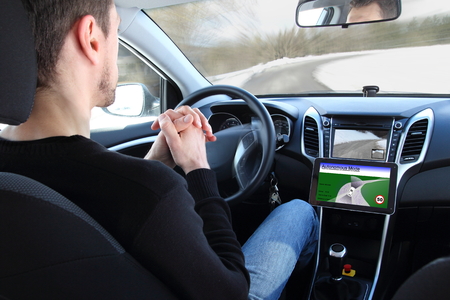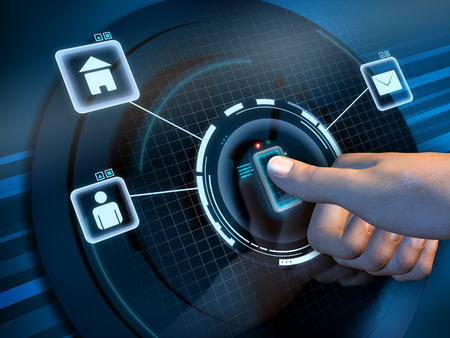For many of us, our smartphone is our lifeline, providing us with constant access to communication, entertainment, news and shopping. It is, by far, says Marco Dallabora, senior director – Mobile Business Unit at Micron Semiconductor Italia, the most preferred digital device that we use every day.
It is a hub that connects to everything from watches to speakers, to home security systems, and even to our car. Our smartphone is also highly personalised, storing gigabytes of contacts, user preferences, and customised data that delivers a tailored user experience. It’s this combination of ubiquity and personalisation that makes the smartphone so powerful.
With all of this personalisation available on our smartphone, why should our experience in the car be any different? Automakers have been embracing the idea of personalisation for years. Ever since BMW introduced Apple iPod connectivity in 2004, automakers have worked to integrate a personalised “smartphone experience” into the car. Fast forward to 2016, and in-car connectivity through smartphone integration is ubiquitous in new vehicles (think Ford’s Sync App Link, BMW’s ConnectedDrive or Mercedes me applications).
Personalisation: Enabling much more than entertainment
What the smartphone offers to the automotive technology is the opportunity to personalise and offer richer capabilities that go far beyond entertainment. Imagine getting into a rental or shared car, and after a quick data sync with your smartphone, the car has all of your personal preferences including seat position, thermal settings, maps and addresses, phone contacts, frequent destinations, and restaurant recommendations. Instantly, this car has become tailored to your individual needs.
And of course, having real-time data flowing into the car also provides the potential for driver convenience, such as quickly locating parking spots. While there are already a number parking locator apps available today, imagine if these features were more tightly integrated into the car’s navigation system, with real-time recommendations and directions to the nearest parking spots.
 Personalised smartphone data can also contribute to enhancing advanced driver assistance systems. Custom-built applications take advantage of the smartphone’s sensing, computing and communications features that can assist human driving. However, safety should not be taken lightly, and users need to be aware that smartphone apps do not replace human instincts.
Personalised smartphone data can also contribute to enhancing advanced driver assistance systems. Custom-built applications take advantage of the smartphone’s sensing, computing and communications features that can assist human driving. However, safety should not be taken lightly, and users need to be aware that smartphone apps do not replace human instincts.
These apps simply use accelerometers or GPS readings to provide a driving score based on factors such as braking, cornering, accelerating or compliance to speed limits. The potential for assigning a “driver score” could possibly inspire better driving behaviour and could also help insurance companies enable more customised insurance or provide companies like Uber and Lyft to better rank their drivers.
Equipping the car—and the mobile device—with better memory technology
While many of these capabilities are not here yet, they are on the horizon. True connected car personalisation requires a tighter collaboration between the car’s internal platform and smartphone applications. Additionally, the industry will need a standardised way to interpret data so that the user experience is the same regardless of the vehicle.
Manufacturers understand that memory is one of the most critical components for delivering this advanced integration and functionality. Memory provides the underlying code, data, and parameters for most of the car’s electronic systems, including advanced driving assistance (ADAS), heads-up display (HUD), dashboard instrumentation, navigation, infotainment and powertrain.
 The smartphone’s memory subsystem must evolve as well. As software developers up the ante on richer personalised experiences, the mobile device must be equipped to handle the barrage of data that richer applications will create. While the car accesses the smartphone’s various applications and personalised datasets, the mobile device is constantly “file caching” and reading/writing into memory. This scenario requires both increased memory size and improved storage performance.
The smartphone’s memory subsystem must evolve as well. As software developers up the ante on richer personalised experiences, the mobile device must be equipped to handle the barrage of data that richer applications will create. While the car accesses the smartphone’s various applications and personalised datasets, the mobile device is constantly “file caching” and reading/writing into memory. This scenario requires both increased memory size and improved storage performance.
Moving forward, new opportunities will materialise for personalisation in the connected car. The upcoming 5G cellular network, with much higher throughput than existing 4G networks, offers a lot of promise for both mobile devices and the automotive space. These blazing fast speeds will move more data between the smartphone and car, driving the need for even faster memory and higher capacity storage.
It is clear that innovation in both automotive and smartphone technologies is not standing still. And it is certain that fully autonomous driving will become a reality, smartphone camera resolutions will get higher, multimedia will become richer, and the amount of car sensors and accelerometers will increase. For these reasons, it is critical that the vehicles continually employ a better, faster, and more sophisticated memory and storage subsystem to enable the future driver experience.
The author of this blog is Marco Dallabora, senior director – Mobile Business Unit, Micron Semiconductor Italia
Comment on this article below or via Twitter: @IoTNow_OR @jcIoTnow










